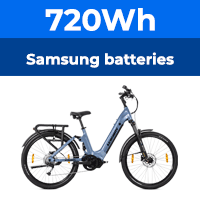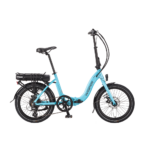Alex,your own threads show the major differences between LifePo4 and LiMno4...
LifePo4....9.7kg....2000 cycles
LiMno4....7.0kg.....800 cycles.
The decision to use LifePo4 on all our urban bicycles was one of the best decisions that we made when coming into the ebike industry....the battery type was originally developed for unmanned weather station usage,as such it basically had to look after itself,it is very user friendly,safe,cheap, and temperature tolerant,if you google 'LifePo4' it will giver a good account of its advantages,the primary disadvantage is its low energy density (ie its heavy),this tends to limit its capacity to 10Ah,after that its weight becomes unacceptable.
For this reason our latest range of performance ebikes will use LiMno4,for it seems crazy to spend a lot of effort to save a few grams when the battery is 1.7 kg heavier,however,we have kept the price low to compensate for the reduced cycle life.
The long cycle life on LiFePo4 is not just hype,some of our original sales are coming up to 2 years old with plus 500 cycles with no loss of performance.
One point about LifePo4 is the battery readout on the display works on voltage drop. There is almost no voltage drop of a LiFePo4 battery during usage until the power is almost exhausted,this means that the performance over the usage cycle is maintained but the exhaust point is sudden and unpredicatable-to my knowledge nobody has yet developed a battery usage display linked to LifePo4 which is progressive.
In contrast LiMn04 has a progressive voltage drop throughout the usage cycle,this means that the power does drop off progressively however the display gives a progressive readout.
Understanding the differences allows a choice between weight,range and lifecycle cost-if you run a Porsche you would expect it to perform better but cost more than a VW !!!
Hope that helps
Dave
Kudoscycles








